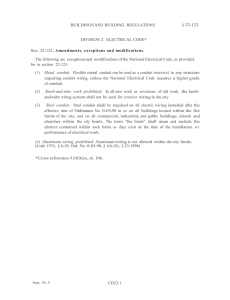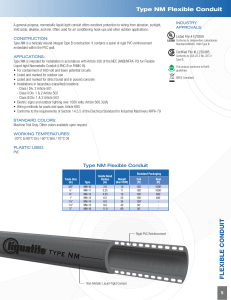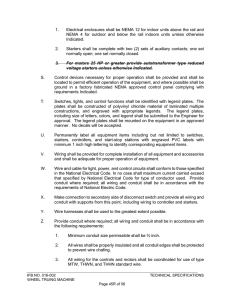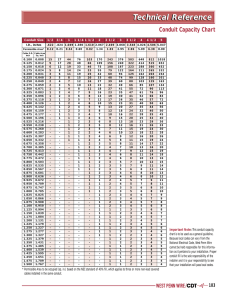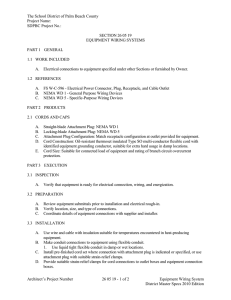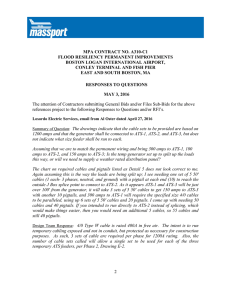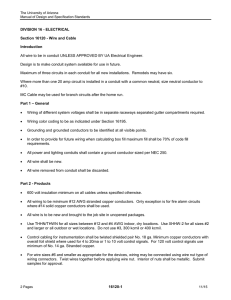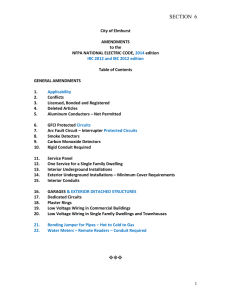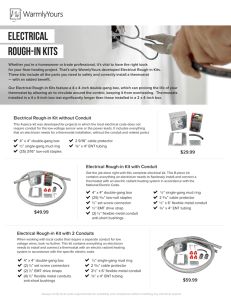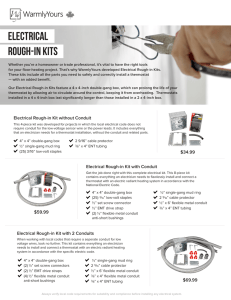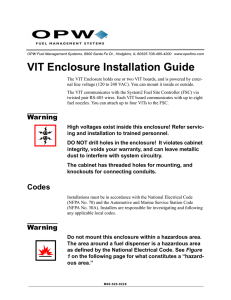depth requirements for residential underground electrical wiring
advertisement
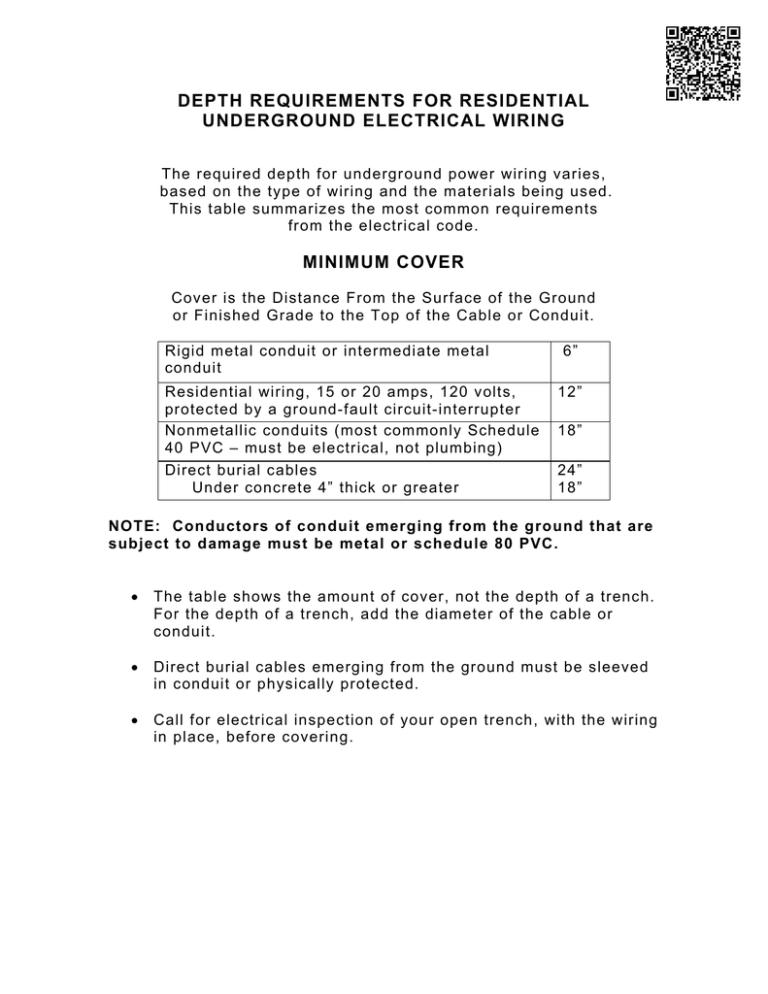
DEPTH REQUIREMENTS FOR RESIDENTIAL UNDERGROUND ELECTRICAL WIRING The required depth for underground power wiring varies, based on the type of wiring and the materials being used. This table summarizes the most common requirements from the electrical code. MINIMUM COVER Cover is the Distance From the Surface of the Ground or Finished Grade to the Top of the Cable or Conduit. Rigid metal conduit or intermediate metal conduit Residential wiring, 15 or 20 amps, 120 volts, protected by a ground-fault circuit-interrupter Nonmetallic conduits (most commonly Schedule 40 PVC – must be electrical, not plumbing) Direct burial cables Under concrete 4” thick or greater 6” 12” 18” 24” 18” NOTE: Conductors of conduit emerging from the ground that are subject to damage must be metal or schedule 80 PVC. • The table shows the amount of cover, not the depth of a trench. For the depth of a trench, add the diameter of the cable or conduit. • Direct burial cables emerging from the ground must be sleeved in conduit or physically protected. • Call for electrical inspection of your open trench, with the wiring in place, before covering.
